The birth of the muscle car era
by Roland D. Hallee
Arguably the most exciting time in the U.S. auto industry was the muscle car era. Although purists will make their case that it began with the 1948 Oldsmobile Rocket 88, most car enthusiasts, including myself, will point to the 1964 Pontiac GTO.
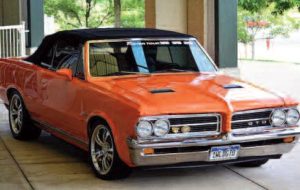
1964 GTO
The GTO actually evolved from the Pontiac Tempest that was introduced as an entry-level compact in September 1960. It would later drop the moniker Tempest in favor of the LeMans line, which was an upgrade feature for those who wanted a more deluxe coupe. I owned a 1963 LeMans. The engine was a 195-cubic-inch 4-cylinder engine named the “Trophy 4” because it was derived from the right cylinder bank of Pontiac’s 389 cubic-inch V8. The engine produced enough horsepower to out perform rival Ford’s 6-cylinder engine.
Originally, in 1964 and 1965, Pontiac offered the GTO as an optional package.
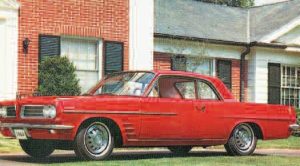
1963 Tempest LeMans
By the early 1960s, General Motors management banned divisions from being involved in auto racing. With that ban on factory-sponsored racing, Pontiac’s managers began to emphasize street performance.
The GTO was the creation from an upcoming second-generation Pontiac Tempest with a larger 389 cubic inch V8 engine from the full-sized Catalina and Bonneville. By promoting the big-engine Tempest as a special high performance model, they could appeal to the younger, speed-minded market, which Ford was at the time preparing the sporty Ford Mustang variant of the second generation Falcon.
The name, which has been tossed around for years, was inspired by the Ferrari 250 GTO, the successful race car. It is an Italian abbreviation for Gran Turismo Omologato, or “officially certified for racing in the grand tourer class.”
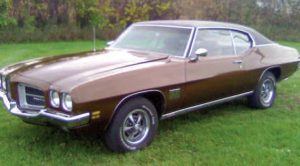
1971 LeMans
Sales manager Frank Bridge, who did not believe it would find a market, insisted on limiting initial production to 5,000 cars. His prediction proved wrong as the GTO package sold a total of 32,450 cars in 1964.
The Tempest line, including the GTO, was redesigned in 1965, adding 3.1 inches to the overall length while maintaining the same wheelbase. It included a simulated hood scoop. A seldom seen dealer-installed option consisted of a metal underhood pan and gaskets to open the scoop, making it a cold air intake. Its effectiveness was questioned, but it allowed more of the engine’s roar to escape.
In 1966, GTO became a separate Pontiac model instead of being an option package of the Tempest LeMans. The entire body was restyled that year, gaining more curves to the sheet metal to give it the “Coke bottle” look that was popular at the time. Sales increased to 96,946 that year, the highest production figure for all GTO years. Although Pontiac had strenuously promoted the GTO in advertising as the “GTO Tiger,” it became better known in the youth market as the “goat.”
The 1967 model brought on few styling changes. The louvered-covered tail lights were replaced with eight tail lights, four on each side. Rally II wheels with colored lug nuts were also available. The grill was changed from a purely split grill, to one that shared some chrome. A total of 81,722 units were manufactured that year.
More changes came in 1968 with a redesigned A-body that included a more curvaceous, semi-fastback styling. The overall length of the car was reduced by 5.9 inches. The concealed headlights were a popular option. More innovations were the hidden windshield wipers and the hood mounted tachometer.
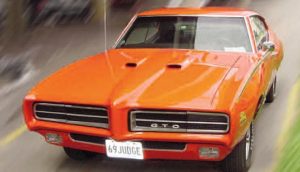
The Judge 1969
In 1968, “The Judge” was introduced. It had a Ram Air III engine, Rally II wheels, Hurst shifter with a unique T-shaped handle, wider tires, various decals and a rear mounted spoiler.
When I was stationed at Fort Bragg, North Carolina, my bunk mate had a “Judge” and we made frequent trips to visit his relatives in Georgia and Florida. We usually made good time on the trips, until one day, reaching speeds of 110 mph, we were unable to outrun a county sheriff in a souped-up 1968 Chevrolet Chevelle 396. The car was unmarked, and we had no way of knowing he was a sheriff’s deputy. He let us off easy.
More design changes came in 1970, doing away with the hidden headlights in favor of four exposed round ones. The nose retained the protruding vertical prow theme, although it was less prominent.
By now, there were other manufacturers competing for the muscle car market: the Oldsmobile 442, Ford Boss Mustang, Buick Gran Sport, Dodge Charger and the Mercury Cougar, just to name a few.
The only time I actually owned a muscle car was when I convinced my wife that the Olds 442 was a family car. Mine was a 1966 version, but that’s a story for another time.
The Judge was still available in 1970, but with an option of the 455-cubic-inch V8 engine. But, by now, sales of the GTO began to decline, and the new styling did little to help sales. Punitive surcharges by insurance companies, and the increase in gasoline prices began to take its toll on the entire muscle car market.
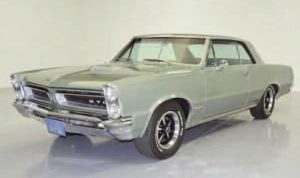
1965 GTO
By 1971, the GTO received another facelift, similar to the LeMans, which I purchased that year. It was the closest I ever came to owning a GTO. The LeMans came with a 350-cubic-inch engine.
By now, the wife was a little wiser.
David Pearson drove a 1971 GTO in the NASCAR Winston Cup series that year.
In 1972, the GTO reverted from a separate model line to that of being an option package for the LeMans.
New federal regulations in 1973 didn’t lend well for the GTO either. Laws now stipulated that front and rear bumpers had to be capable of withstanding 5-mile-per-hour impacts with no damage to the body. The result was the use of prominent and heavy chrome bumpers. The overall styling of the 1973 Pontiac was generally not well received by the car buying public.
In contrast, the Pontiac Grand Prix and Chevrolet Monte Carlo were better received because of the their squared-off style and formal rooflines. Oldsmobile also received better reviews with the Cutlass.
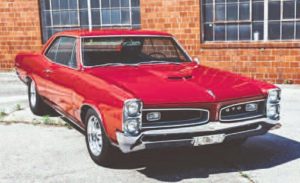
1966 GTO
The 1974 model then underwent drastic changes, which in my opinion was the beginning of the demise of the GTO when it was turned into an entry into the compact muscle market made popular by the Plymouth Duster, Ford Maverick and AMC Hornet. Pontiac moved the GTO to the compact Pontiac Ventura, which shared its sheet metal with the Chevrolet Nova.
Sales were an improvement over 1973, at 7,058 but not enough to justify continuing the model.
During the 1999 Detroit Auto Show, a GTO concept car with a heritage-inspired ”Coke-bottle” shape, grille and hood scoop, was introduced to the world. It was only a design experiment and had no engine.
In 2004, the Pontiac GTO was relaunched in the U.S. market in the form of a rebadged, third-generation Holden Monaro. The revival prompted executives to import a Holden Commodore-based vehicle. Even though it was one of the best vehicles that GM offered at the time, it could not be purchased in the United States. It was determined that importing the car from Australia could be a profitable venture.
GM had high expectations to sell 18,000 units, but the Monaro-based GTO received a lukewarm reception in the U.S. The styling was frequently derided by critics as being too conservative and anonymous to befit the GTO heritage. Given the newly-revived muscle car climate, it was also overshadowed by the Chrysler 300, Dodge Charger, Dodge Magnum and the new Ford Mustang, which featured more traditional muscle car aesthetics. Only 13,569 Monaros were sold in 2004.
The GTO continued to exist until it was announced in 2006 by GM the general manager that 2006 would be the last model year for GTO. The explanation was the inability to meet new airbag deployment standards for 2007. The final production numbers for the 2006 model were 13,948, an increase from 11,069 the previous year.

The last GTO – 2006
The last Pontiac GTO came off the assembly line in Australia on June 4, 2006.
Next time, more muscle cars.
Responsible journalism is hard work!
It is also expensive!
If you enjoy reading The Town Line and the good news we bring you each week, would you consider a donation to help us continue the work we’re doing?
The Town Line is a 501(c)(3) nonprofit private foundation, and all donations are tax deductible under the Internal Revenue Service code.
To help, please visit our online donation page or mail a check payable to The Town Line, PO Box 89, South China, ME 04358. Your contribution is appreciated!


Leave a Reply
Want to join the discussion?Feel free to contribute!